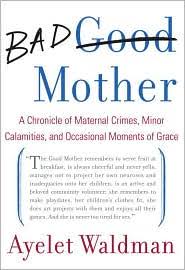
Not sure I’ve got spunk/sass yet since I’m a little, how do you say, sleep deprived, but I do have a post up over at the She Writes blog called : “Finding Mother Writer” which excerpts a GWP post of course.
Here’s to all you mother writers out there who have been doing it for some time. You inspire the heck out of me over here!

 This here post comes straight from dear friend of GWP and mine, and fellow writer,
This here post comes straight from dear friend of GWP and mine, and fellow writer,  My latest Love in the Time of Layoff column is now up at Recessionwire.com. It’s titled
My latest Love in the Time of Layoff column is now up at Recessionwire.com. It’s titled  I’ve been so busy during this pregnancy either a) puking or b) helping start a
I’ve been so busy during this pregnancy either a) puking or b) helping start a  A new book has caught my eye, covering some of my favorite themes:
A new book has caught my eye, covering some of my favorite themes:  Since I was busy puking my guts out this morning (month 6! when will the nausea end?!), Marco filled in for me over at
Since I was busy puking my guts out this morning (month 6! when will the nausea end?!), Marco filled in for me over at 